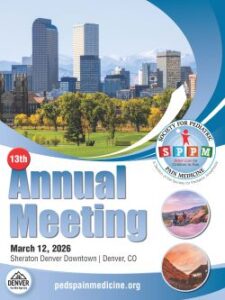
Baby Blocks was created to fill a critical gap in pediatric regional anesthesia education. Unlike existing resources that are often paywalled or buried within adult-focused content, Baby Blocks is the first open-access platform designed exclusively for pediatric providers. Built on values of collaboration, shared learning, and generosity, our mission is to democratize access to high-quality, evidence-based regional techniques through comprehensive guides, educational videos, and global mentorship – all free and industry-independent.
Click HERE for more information!

 SPPM 13th Annual Meeting
SPPM 13th Annual Meeting